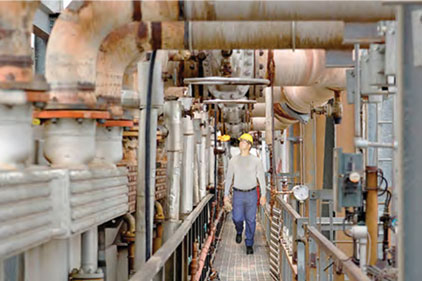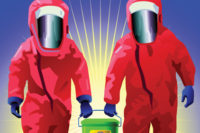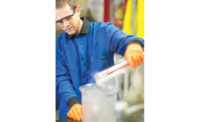While OSHA continues to move slowly in the rulemaking development process, accidents continue to occur. There were at least a dozen OSHA citations related to combustible dust in 2012 alone, with fines into the hundreds of thousands of dollars. Although there has been a lack of urgency at OSHA, the National Fire Protection Association (NFPA) has not been standing still as it relates to standards development for this hazard.
NFPA developments
The NFPA has a whole host of standards related to combustible dust in a variety of different industries, and this list is continually added to and revised. Some of the NFPA standards related to combustible dust include: SEE CHART
| STANDARD NUMBER | TITLE |
| NFPA 61 | Standard for the Prevention of Fires and Dust Explosions in Agricultural and Food Processing Facilities |
| NFPA 69 | Standard on Explosion Prevention Systems |
| NFPA 484 | Standard for Combustible Metals |
| NFPA 499 | Classification of Combustible Dusts and of Hazardous (Classified) Locations for Electrical Installations in Chemical Process Areas |
| NFPA 654 | Standard for the Prevention of Fire and Dust Explosions From the Manufacturing, Processing and Handling of Combustible Particulate Solids |
| NFPA 655 | Standard for Prevention of Sulfur Fires and Explosions |
| NFPA 664 | Standard for the Prevention of Fires and Explosions in Wood Processing and Woodworking Facilities |
| NFPA 2112 | Standard on Flame-Resistant Garments for Protection of Industrial Personnel Against Flash Fire |
| NFPA 2113 | Standard on Selection, Care, Use, and Maintenance of Flame-Resistant Garments for Protection of Industrial Personnel Against Flash Fire |
One of the most recent updates to these standards related to protective clothing was in the 2013 edition of NFPA 654. In section 6.1.1.10, it specifically states: “Personnel exposed to a dust flash fire hazard shall be protected.”
Also, section 11.2.2 requires “Operating and maintenance procedures shall address personal protective equipment, including flame-resistant garments, in accordance with the workplace hazard assessment required by NFPA 2113….”
The annex A.11.2.2 explains, “Where a dust explosion hazard or dust flash fire hazard exists, flame-resistant garments provide a measure of protection for exposed personnel.”
In addition to these standards, the NFPA has published a comprehensive “Guide to Combustible Dust.” This guide contains more than 300 pages of materials designed to help companies deal with potential combustible dust hazards. It covers explosion fundamentals, process hazard analysis, fire hazard control, explosion hazard control, industrial processes and safety management systems all related to combustible dust.
A task group was also formed to work on the development of a new standard designed to cover the “Fundamentals of Combustible Dust.” The scope of this new standard will be to provide the basic principles of and requirements for identifying and managing the fire and explosion hazards of combustible dust. It will provide users with general requirements and direct them to the appropriate industry- or commodity-specific standard for additional requirements.
ASTM actions
In addition to the OSHA rulemaking process and NFPA standards development, another behind the scenes activity taking place is in the ASTM F23 (Technical Committee on Personal Protective Clothing and Equipment) task group working on a combustible dust guide.
This guide will serve as a reference for employers and safety personnel who are conducting research on the combustible dust hazard and the use of flame and thermal resistant clothing for protection from this hazard. The ASTM committee felt there was a need to publish a reference guide listing the most common documents regarding this hazard, making combustible dust research easier. The content review of the guide was scheduled for the ASTM F23 meeting at the end of January. This ASTM guide doesn’t take the place of an OSHA regulation or an NFPA standard, but it could make finding the right regulation or standard easier.
Keep an eye on OSHA
The current standards and guides go a long way to help protect companies and their workers from the hazards associated with combustible dust. Identifying and following the recommendations of the standard applicable to your particular hazard can make for a less hazardous environment. It’s a matter of doing the research to find ways to prevent a combustible dust incident and protecting those workers most susceptible to injury should an accident occur.
If you have a potential combustible dust hazard, keep a close eye on OSHA to see where the agency goes with the combustible dust rule. Also, continue to monitor the new standards and guides developed by NFPA and ASTM to keep up to date on any new developments to improve safety.



